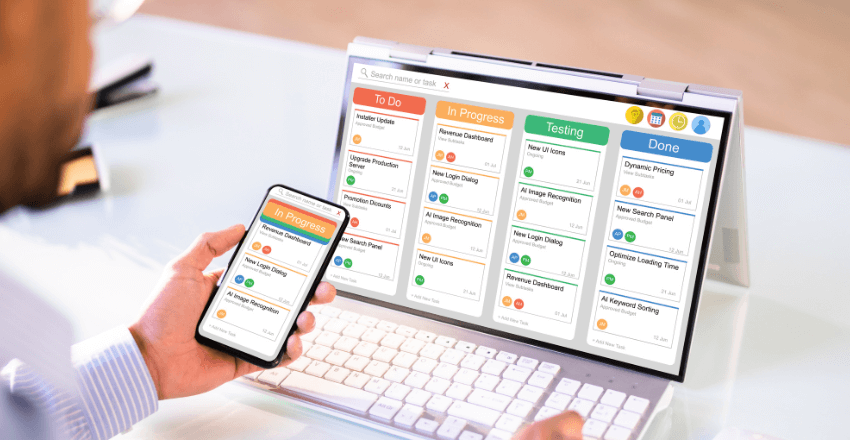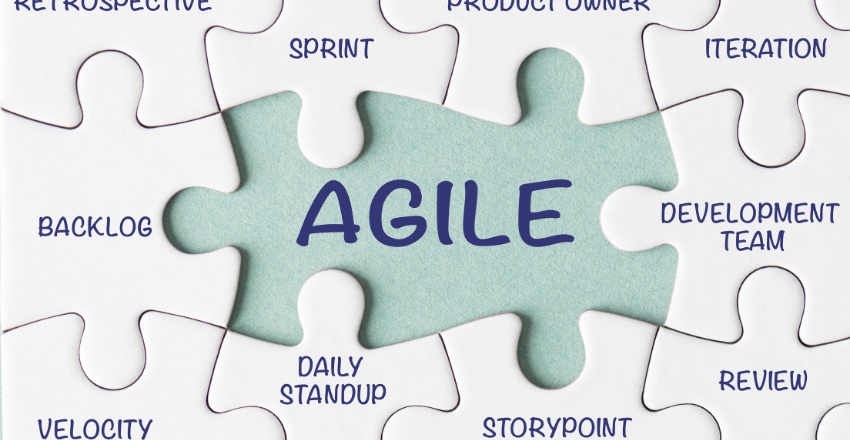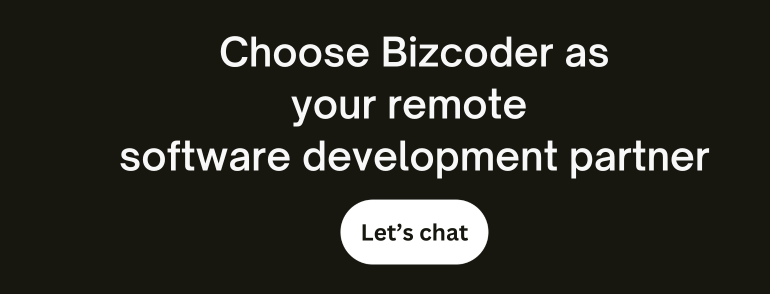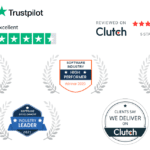Visibility standards are crucial for product owners in Agile teams, as they ensure effective collaboration, alignment, and transparent project management. The product owner (PO) plays a vital role in maximizing the value delivered by the team, ensuring that the team backlog reflects customer and stakeholder needs. Acting as the primary customer advocate, the product owner serves as the link between business and technology strategies, striking a balance between stakeholder requirements and evolving solutions.
The responsibilities of the product owner can be categorized into five primary areas: connecting with the customer, contributing to the vision and roadmap, managing and prioritizing the team backlog, supporting the team in delivering value, and ensuring clear communication among team members and stakeholders. By focusing on these areas, product owners can enhance visibility and facilitate successful Agile outcomes.
To achieve visibility in Agile teams, it is important to define clear objectives and key results (OKRs), utilize Agile project management tools, emphasize clear communication, and involve stakeholders throughout the process. Implementing these practices can lead to transparency, accountability, and effective decision-making within the team.

The Role of the Product Owner in Agile Teams
In Agile teams, the product owner plays a crucial role in maximizing value delivery, acting as the primary customer advocate, and ensuring alignment between customer and stakeholder needs. The product owner is responsible for managing the team backlog and prioritizing work to meet the desired outcomes effectively.
1. Connecting with the Customer
The product owner acts as the bridge between the development team and the customer. By understanding the customer’s needs, preferences, and feedback, the product owner can effectively prioritize the team backlog and guide the development process accordingly. This close connection with the customer allows the product owner to make informed decisions and ensure that the final product meets customer expectations.
2. Contributing to the Vision and Roadmap
The product owner actively contributes to the vision and roadmap of the project. By aligning the development efforts with the business and technology strategies, the product owner ensures that the team’s work is focused on delivering value to the stakeholders. This contribution involves defining the project goals, identifying key milestones, and continuously evolving the solution to meet evolving market demands.
3. Managing and Prioritizing the Team Backlog
The product owner is responsible for managing and prioritizing the team backlog. This involves collaborating with stakeholders to gather requirements and feedback, defining user stories, and ensuring that the most valuable work is prioritized for the team. By effectively managing the backlog, the product owner ensures that the team’s efforts are aligned with delivering the highest value to the customer.
By playing these roles and responsibilities, the product owner becomes a critical asset in Agile teams. Their ability to connect with the customer, contribute to the vision, manage the backlog, and support the team in delivering value drives the success of Agile projects. It is through their actions that transparency, accountability, and effective decision-making thrive.
Table: Key Responsibilities of the Product Owner
| Responsibility | Description |
|---|---|
| Connecting with the Customer | Act as a customer advocate, understand customer needs, and prioritize work accordingly. |
| Contributing to the Vision and Roadmap | Align development efforts with business and technology strategies, define project goals, and evolve the solution to meet market demands. |
| Managing and Prioritizing the Team Backlog | Collaborate with stakeholders, gather requirements, define user stories, and prioritize work for the team. |
| Supporting the Team in Delivering Value | Provide guidance, remove obstacles, and facilitate collaboration to enable the team to deliver value. |
| Ensuring Clear Communication | Facilitate effective communication among team members and stakeholders, ensuring transparency and alignment. |
Connecting with the Customer
Connecting with the customer is a key responsibility of the product owner, as it allows them to gain insights into customer needs and align the team backlog accordingly. By understanding the customer’s perspective, the product owner can effectively prioritize features and functionalities that deliver maximum value. This involves actively engaging with the customer, conducting user research, and gathering feedback to inform the product development process.
In order to establish a strong connection with the customer, the product owner must be an empathetic listener and a skilled communicator. They should actively seek out customer input and involve them in product demonstrations and feedback sessions. By maintaining a constant dialogue with the customer, the product owner can ensure that their needs are met and that the product evolves in a way that truly solves their problems.
Furthermore, a product owner must have a deep understanding of the market and industry trends to connect the dots between customer needs and business objectives. This involves conducting market research, analyzing competitors, and staying up-to-date with emerging technologies and customer expectations. By being well-informed, the product owner can effectively guide the team’s decision-making process and steer the product towards success.
“The customer’s perception is your reality.” – Kate Zabriskie
| Benefits of Connecting with the Customer: |
|---|
| 1. Improved customer satisfaction and loyalty |
| 2. Enhanced product-market fit |
| 3. Reduced time and effort spent on rework |
| 4. Increased competitive advantage |
| 5. Higher conversion rates and revenue |
Contributing to the Vision and Roadmap

Product owners play a vital role in contributing to the vision and roadmap of the project, aligning business and technology strategies for successful outcomes. With a deep understanding of customer needs and market trends, product owners collaborate with stakeholders to define the overall direction and goals of the project. By assessing the market landscape and identifying opportunities, they ensure that the vision of the product aligns with the organization’s objectives and customer expectations.
Product owners also work closely with the development team to translate the vision into actionable steps and milestones. They prioritize features and functionalities based on market value, technical feasibility, and business priorities, ultimately creating a roadmap that guides the team’s work. This roadmap outlines the strategic direction and helps the team stay focused on delivering valuable solutions that address customer pain points and drive business growth.
Aligning Stakeholders and Prioritizing Efforts
Effective product owners excel at aligning stakeholders’ expectations and communicating the vision to the team. Through regular collaboration and feedback loops, they ensure that all stakeholders have a clear understanding of the project’s progress and the steps required to achieve the desired outcomes. They facilitate discussions and decision-making processes, which helps the team prioritize efforts and deliver value in an iterative and incremental manner.
Additionally, product owners actively solicit feedback from customers and stakeholders to validate assumptions and refine the product vision. By engaging in continuous feedback loops, they can adapt and adjust the roadmap as needed, ensuring that the product remains aligned with market demands and customer needs. This iterative approach allows for flexibility while maintaining focus on achieving the overall project goals.
| Responsibilities | Actions |
|---|---|
| Collaborate with stakeholders | Regularly meet with stakeholders to align on vision and objectives |
| Translate vision into actionable steps | Prioritize features and functionalities based on market value and business priorities |
| Facilitate discussions and decision-making | Ensure alignment and prioritize efforts |
| Continuous feedback loops | Engage with customers and stakeholders to validate assumptions |
By actively contributing to the vision and roadmap, product owners drive the success of agile projects, creating a clear path for the team to follow and ensuring that the end result aligns with the needs of both the business and the customer. Their ability to navigate complex requirements and balance competing priorities is instrumental in achieving the desired outcomes and delivering value to stakeholders.
Managing and Prioritizing the Team Backlog
Effective management and prioritization of the team backlog is a key responsibility of the product owner, ensuring that it aligns with customer and stakeholder requirements. By constantly evaluating and refining the backlog, the product owner maintains a clear overview of the work to be done, allowing for the delivery of maximum value to the end-user.
To facilitate efficient backlog management, product owners can utilize various techniques and tools. One such technique is the use of user stories, which provide a concise and easily understandable way to capture and prioritize customer needs. Breaking down work into smaller, manageable units helps ensure that the team backlog remains focused on delivering incremental value.
Another useful practice is the establishment of a backlog refinement process. This involves regular meetings with the development team to review, prioritize, and estimate upcoming work. By collaborating closely with the team, the product owner can ensure that the backlog items are understood, refined, and ready for implementation.
Sample Table: Backlog Prioritization
| Priority | User Story |
|---|---|
| 1 | As a user, I want to be able to log in with my email and password to secure my account. |
| 2 | As an admin, I want to be able to generate customized reports to track user activity. |
| 3 | As a customer, I want to be able to add items to my shopping cart for easy checkout. |
By effectively managing and prioritizing the team backlog, the product owner ensures that the development team is always working on the most valuable and impactful tasks. This approach enables efficient resource allocation, allows for timely adjustments based on changing requirements, and ultimately leads to the successful delivery of customer-focused solutions.
Supporting the Team in Delivering Value
Supporting the team in delivering value is a critical responsibility of the product owner, requiring them to provide guidance, remove obstacles, and foster collaboration. By actively engaging with the team and understanding their strengths and challenges, the product owner can ensure that the project stays on track and objectives are met.
To facilitate effective collaboration, the product owner must act as a bridge between the business stakeholders and the development team. This involves communicating the vision and goals of the project clearly, as well as aligning with the team on the expectations and priorities. By building strong relationships with team members, the product owner can establish trust and promote a shared understanding of the value being delivered.
In addition to providing guidance, the product owner plays a crucial role in removing obstacles that hinder progress. They identify and address any issues or dependencies that may impact the team’s ability to deliver value. By proactively resolving impediments and streamlining processes, the product owner empowers the team to work efficiently and focus on value creation.
Furthermore, the product owner is responsible for fostering collaboration within the team. This involves facilitating effective communication channels, organizing regular meetings, and encouraging open discussions. By promoting a culture of collaboration and innovation, the product owner enables the team to leverage their diverse skills and expertise to deliver high-quality solutions.
| Responsibilities of the Product Owner in Supporting the Team |
|---|
| Provide guidance and clarity on project objectives |
| Remove obstacles and address dependencies |
| Foster collaboration and effective communication |
By fulfilling these responsibilities, the product owner not only supports the team in delivering value but also creates an environment that promotes continuous improvement and growth. Their active involvement and dedication to the project’s success are instrumental in ensuring the alignment of customer needs, stakeholder expectations, and business objectives.
Ensuring Clear Communication

Clear communication is essential for agile teams, and product owners play a vital role in ensuring effective communication among team members and stakeholders. As the primary customer advocate, the product owner acts as a bridge between the business and technology strategies, facilitating the understanding of stakeholder needs and requirements.
One way product owners promote clear communication is by fostering an environment of open dialogue and collaboration. They encourage team members to share ideas, concerns, and progress updates regularly. By facilitating effective communication channels, such as daily stand-up meetings and sprint reviews, product owners ensure that everyone is on the same page and informed about project milestones and deliverables.
In addition to promoting open communication within the team, product owners also facilitate communication with stakeholders. They regularly engage with customers, gathering feedback and insights to inform decision-making and drive value delivery. By actively involving stakeholders throughout the agile process, product owners ensure that their perspectives are considered and that the delivered solutions meet their expectations.
To further enhance communication, product owners can utilize visualization techniques such as Kanban boards or burn-down charts. These tools provide a clear visual representation of the team’s progress, enabling stakeholders to easily understand project status and make informed decisions. By leveraging these visual aids, product owners can effectively communicate project updates and ensure transparency within the team and with external stakeholders.
Example Table
| Communication Tips | Benefits |
|---|---|
| Encourage active listening | Prevents misunderstandings and fosters empathy |
| Use visual aids | Enhances clarity and understanding |
| Promote regular feedback sessions | Facilitates continuous improvement and alignment |
In conclusion, clear communication is crucial for the success of agile teams, and product owners play a significant role in facilitating effective communication among team members and stakeholders. By fostering an environment of open dialogue, engaging with stakeholders, and utilizing visualization techniques, product owners can ensure transparency, alignment, and ultimately drive value delivery in agile projects.
Defining Clear Objectives and Key Results (OKRs)

Defining clear objectives and key results (OKRs) is crucial for achieving visibility in agile teams, and product owners can play a pivotal role in implementing this practice. By setting specific and measurable objectives, teams can effectively track progress and align their efforts with the overall project goals. Key results provide the quantifiable metrics that indicate progress and success.
When defining objectives, it is important to ensure they are aligned with the overall vision and roadmap of the project. This helps to prioritize tasks and focus on the most valuable outcomes. Product owners can facilitate this alignment by actively engaging with stakeholders and understanding their needs and expectations.
Example: Clear Objectives and Key Results (OKRs)
Let’s consider an example of a product owner responsible for developing a mobile application. An objective could be to increase user engagement, while key results would include metrics such as the number of active users, the average session duration, and the conversion rate. By regularly reviewing these key results, the product owner can assess the success of the objective and make data-driven decisions to enhance user engagement further.
Implementing OKRs requires transparency and collaboration within the team. Regular communication and progress updates are vital to ensure everyone is aligned and working towards the defined objectives. Agile project management tools can be used to track OKRs, visualize progress, and keep the team informed. By utilizing these tools, product owners can provide visibility into the status of objectives and empower the team to make informed decisions.
| Objective | Key Results |
|---|---|
| Increase user engagement |
|
By defining clear objectives and key results (OKRs), product owners can promote visibility, focus on delivering value, and ensure that the team works collaboratively towards shared goals. This practice fosters a culture of transparency, accountability, and effective decision-making, ultimately leading to successful outcomes in agile teams.
Utilizing Agile Project Management Tools

Agile project management tools can significantly contribute to improving visibility and enabling efficient project management for product owners. These tools provide a centralized platform for tracking and managing project progress, facilitating collaboration among team members, and ensuring that everyone is aligned with the project goals. By leveraging these tools, product owners can streamline their workflows, make informed decisions, and enhance overall productivity.
Benefits of Agile Project Management Tools
There are several key benefits of utilizing agile project management tools:
- Enhanced Collaboration: These tools offer features such as real-time communication, task assignment, and progress tracking, allowing team members to collaborate seamlessly. This fosters transparency and effective communication, ensuring that everyone is on the same page throughout the project.
- Improved Visibility: Agile project management tools provide clear visibility into project status, milestones, and individual tasks. Product owners can easily track progress, identify potential bottlenecks, and make data-driven decisions to ensure that the project stays on track.
- Efficient Resource Management: These tools enable product owners to allocate resources effectively and optimize the team’s capacity. By having a clear overview of the workload, resource availability, and task dependencies, product owners can ensure that the team is working on the most important and valuable tasks at any given time.
Examples of Agile Project Management Tools
There are various agile project management tools available in the market. Here are a few popular examples:
| Tool | Description |
|---|---|
| Jira | Jira is a widely-used agile project management tool that allows teams to plan, track, and release software efficiently. It provides features like scrum boards, backlog management, and customizable workflows. |
| Trello | Trello is a visual project management tool that uses kanban boards to organize and track tasks. It enables product owners to create boards, assign tasks, set due dates, and collaborate with team members in real time. |
| Asana | Asana is a flexible project management tool that helps teams manage their work and track progress. It offers features such as task management, team collaboration, and project timeline visualization. |
These are just a few examples, and product owners should choose the tool that best suits their team’s needs and preferences.
By utilizing agile project management tools, product owners can streamline their processes, improve visibility, and achieve successful project outcomes. These tools empower product owners to effectively manage projects, collaborate with team members, and make data-driven decisions, ultimately leading to enhanced efficiency and customer satisfaction.
Emphasizing Stakeholder Involvement
Involving stakeholders throughout the agile process is crucial for achieving visibility, and product owners play a crucial role in facilitating their active participation. By engaging stakeholders, product owners can gather valuable insights, align project objectives, and ensure that the end solution meets customer expectations. Effective stakeholder involvement fosters collaboration, enhances decision-making, and strengthens the overall success of agile teams.
The Benefits of Stakeholder Involvement
When stakeholders are actively involved in the agile process, their perspective is considered, and their feedback is incorporated into decision-making. This collaborative approach ensures that the product owner understands stakeholder needs and priorities, leading to the development of a solution that addresses their requirements effectively. It also allows for early identification of potential risks or challenges, enabling timely mitigation strategies.
Furthermore, involving stakeholders fosters a sense of ownership and commitment to the project, creating a shared responsibility for its success. With a vested interest in the outcome, stakeholders are more likely to provide ongoing support, communicate openly, and contribute to the continuous improvement of the product or service being developed.
Facilitating Stakeholder Involvement
Product owners can facilitate stakeholder involvement by establishing clear channels of communication and providing opportunities for regular engagement. This can be achieved through various practices, such as:
- Conducting regular stakeholder meetings or workshops to gather feedback and prioritize requirements.
- Creating a shared project workspace or collaboration platform where stakeholders can access project updates, provide input, and participate in discussions.
- Including stakeholders in sprint reviews or demos to showcase progress and gather real-time feedback.
- Utilizing feedback and user testing sessions to validate assumptions and refine the product.
By actively involving stakeholders throughout the agile process, product owners can harness their collective knowledge and insights, leading to better decision-making, improved product outcomes, and ultimately, achieving visibility through collaboration and alignment.
| Benefits of Stakeholder Involvement | Facilitating Stakeholder Involvement |
|---|---|
| 1. Incorporates stakeholder perspective into decision-making | 1. Conduct regular stakeholder meetings or workshops |
| 2. Early identification of risks and challenges | 2. Create a shared project workspace or collaboration platform |
| 3. Fosters ownership and commitment | 3. Include stakeholders in sprint reviews or demos |
| 4. Utilize feedback and user testing sessions |
Transparency, Accountability, and Effective Decision-Making
By implementing visibility standards and best practices, agile teams can achieve transparency, accountability, and enable effective decision-making for successful project outcomes. Transparency plays a vital role in Agile development, as team members and stakeholders gain insight into the project’s progress, challenges, and successes. Agile teams that foster a culture of transparency build trust and collaboration, facilitating smoother workflows and improved outcomes.
Accountability is another key element in Agile teams. Clearly defined roles and responsibilities, such as those of the product owner, promote individual and collective accountability. When team members are accountable for their tasks and commitments, it enhances their sense of ownership and responsibility, leading to higher motivation and productivity.
Effective decision-making is critical in Agile teams, where quick and informed choices can significantly impact the project’s success. By ensuring transparency and accountability, teams can make timely decisions based on real-time data and feedback. Agile teams encourage open communication and collaboration, utilizing techniques like retrospectives and daily stand-ups to gather insights and make data-driven decisions that align with project objectives.
| Benefits of Transparency, Accountability, and Effective Decision-Making in Agile Teams |
|---|
|
Implementing Best Practices for Transparency, Accountability, and Effective Decision-Making
To achieve transparency, accountability, and effective decision-making, Agile teams can adopt several best practices:
- Regularly communicate project progress, challenges, and successes to team members and stakeholders.
- Establish clear roles and responsibilities, ensuring everyone understands their individual and collective accountability.
- Encourage open and honest feedback, creating an environment where team members feel comfortable sharing their ideas, concerns, and suggestions.
- Utilize project management tools and techniques that provide visibility into the project’s status, such as burndown charts, Kanban boards, and backlog management systems.
- Involve stakeholders throughout the project, seeking their input and aligning their expectations with project goals.
- Regularly evaluate and adapt processes through retrospectives, identifying areas for improvement and implementing changes based on feedback.
By embracing these best practices and prioritizing transparency, accountability, and effective decision-making, Agile teams can maximize their potential, deliver value to stakeholders, and achieve successful project outcomes.
Visibility standards are essential for successful project management in agile teams, and product owners play a pivotal role in ensuring transparency, alignment, and effective collaboration.
The product owner (PO) is responsible for maximizing the value delivered by the team, ensuring that the team backlog is aligned with customer and stakeholder needs. Acting as the primary customer advocate, the PO connects with the customer and understands their requirements, allowing for effective prioritization and management of the team backlog.
In addition to customer connection, the PO contributes to the vision and roadmap of the project, ensuring alignment with business and technology strategies. They manage and prioritize the team backlog, ensuring that it reflects the needs of both customers and stakeholders.
Furthermore, the PO supports the team in delivering value by providing guidance, removing obstacles, and facilitating effective collaboration. Clear communication among team members and stakeholders is also an essential responsibility of the PO, ensuring that everyone is on the same page and enabling successful project outcomes.
To achieve visibility in agile teams, product owners must define clear objectives and key results (OKRs) to guide their teams. They should utilize agile project management tools to enhance visibility and facilitate efficient project management. Emphasizing the involvement of stakeholders throughout the process is crucial for gaining insights and ensuring that the project meets their expectations.
External Sources
https://scaledagileframework.com/product-owner/
https://www.scrum.org/forum/scrum-forum/26650/product-backlog-transparency-vs-visibility
https://www.tempo.io/blog/how-to-master-visibility-with-agile-methodology










